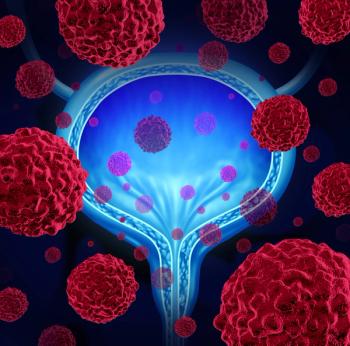
Genomic Subtyping Could Guide Treatment Decisions for Bladder Cancer
Genomic subtyping of muscle-invasive bladder cancer could inform decisions on when best to use neoadjuvant cisplatin-based chemotherapy, according to a retrospective, non-randomized study.
Genomic subtyping of muscle-invasive bladder cancer could inform decisions on when best to use neoadjuvant cisplatin-based chemotherapy (NAC), according to a retrospective, non-randomized study presented (
Different molecular muscle-invasive bladder cancer subtypes (luminal, basal, claudin-low, and luminal-infiltrated) were accurately classified using genomic markers and responded differently to NAC (P = .0001), the research team found.
“The benefit of NAC varies between molecular subtypes,” said senior study author Roland Seiler, MD, of the University of British Columbia in Vancouver, Canada. “The good prognosis of luminal/cluster I tumors could not be improved with NAC, which suggests these patients may be managed best with surgery alone. Poor overall survival of claudin-low tumors even after NAC implies that these tumors are resistant to cisplatin-based chemotherapy, and patients with these tumors should be included in protocols investigating alternative treatment options like immunotherapy.”
In contrast, outcomes for patients with the basal subtype improved significantly with NAC vs surgery alone (P = .001) and basal tumors should therefore be “prioritized for neoadjuvant chemotherapy,” Dr. Seiler said.
Molecular subtypes of muscle-invasive bladder cancer have been identified in previous gene-expression analyses using several different methods. The prognostic and predictive utility of subtyping gene markers and their usefulness in treatment planning and monitoring can vary between subtyping methodologies. The authors therefore sought to study both the associations of subtype and NAC outcomes and concordance of transcriptome-wide microarray subtyping with other subtyping methods.
Two multicenter cohort analyses were done: a discovery set involving 233 pre-NAC specimens and a validation set of 82 pre-NAC specimens. These were compared to public domain non-NAC cohorts, including 179 cases from The Cancer Genome Atlas, among others.
The researchers found high concordance in subtype determinations between the different methodologies. Subtyping showed clinical prognostic promise, revealing significant differences in NAC’s overall survival benefits for patients with different subtypes.
The findings need to be validated before subtyping is ready for routine clinical use, and molecular subtypes are not related to pathologic tumor downstaging, an important prognostic consideration, Dr. Seiler cautioned.
“There is high need for robust predictive biomarkers,” commented Jonathan Rosenberg, MD, of Memorial Sloan Kettering Cancer Center in New York. “Cisplatin is a toxic therapy, associated with neuropathy, hearing loss, and kidney damage that limit its use, and neoadjuvant therapy benefits only a minority of patients.”
Currently, to save 1 patient’s life, up to 20 patients must receive NAC. Genomic subtyping could help identify that 1 patient.
Further work is needed to assess the value of combining different genomic subtyping methodologies, including RNA gene-expression, DNA gene mutation, and epigenetic markers.
Newsletter
Stay up to date on recent advances in the multidisciplinary approach to cancer.
































































































